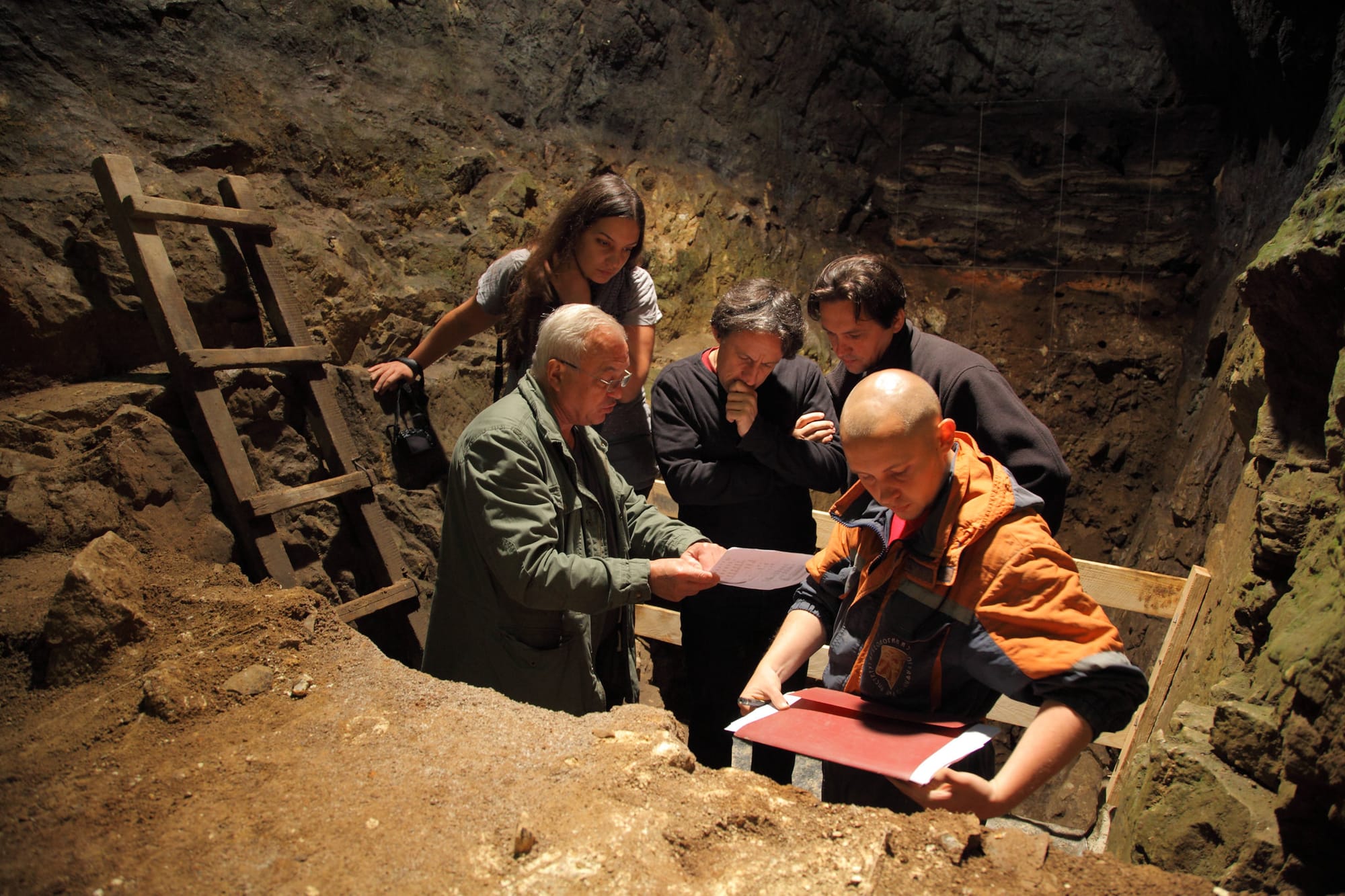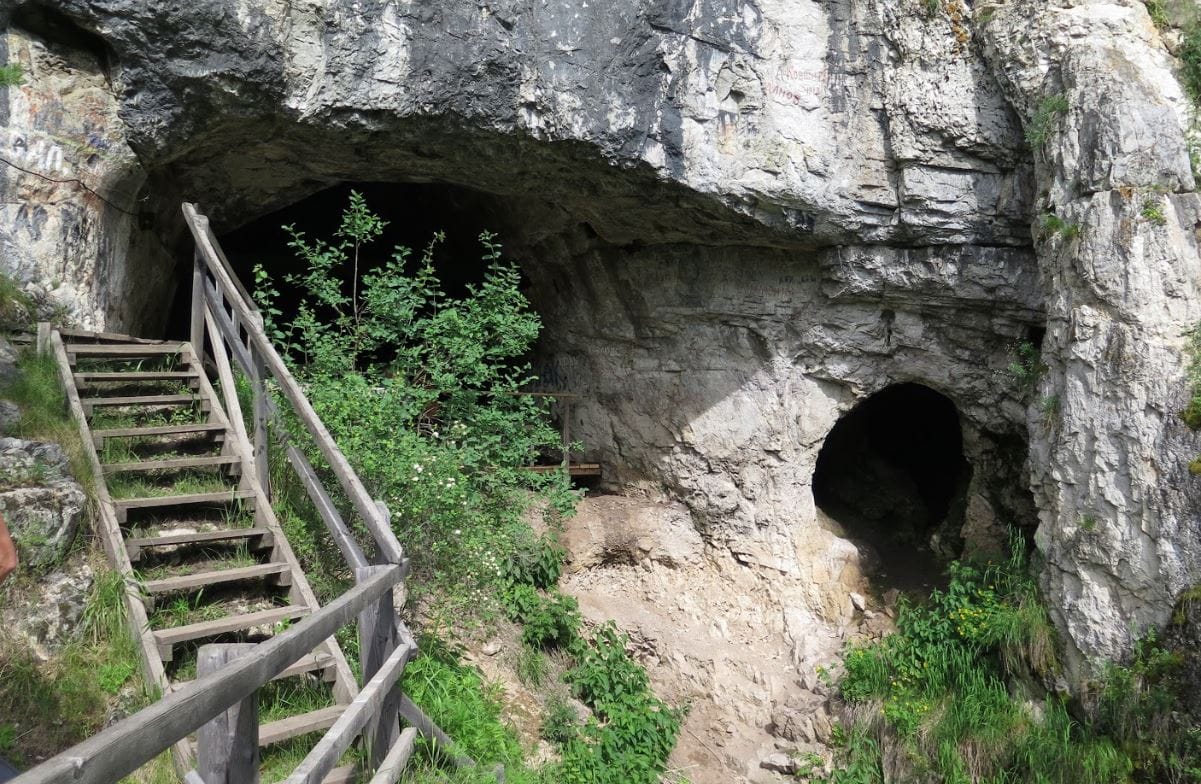Denisova Cave in Siberia

Denisova Cave is the oldest inhabited cave in Siberia, and it is one of the most informative sites for the study of an ancient human culture and the surrounding natural environment, not only of North and Central Asia, but the entire Eurasian continent. The earliest archaeological materials obtained during the study of cave deposits are more than 300,000 years old.
Denisova Cave became world famous in 2010 when one of the leading international scientific journals “Nature” published the results of the genetic analysis of human fossils found in the cave - a fragment of the distal phalanx of the little finger of a 6-7 year old girl. Deciphering first the mitochondrial and then the nuclear DNA from this bone sample showed that it belongs to a previously unknown fossil man, which was named Denisovan after the place where the anthropological remains were found.
Since then, Denisova Cave and scientific and research station of the same name at the Institute of Archaeology and Ethnography of the Siberian Branch of the Russian Academy of Sciences began to draw the attention of tourists, journalists and mass media, including one of the most famous popular scientific geographical magazines "National Geographic". Experts in the field of archeology, paleogenetics, paleoanthropology, geochronology and other disciplines from the world's leading scientific centers take part in the study of the cave.

Denisova Cave is located on the border of North and Central Asia in the northwestern part of the Altai Mountains in the valley of the upper reaches of the Anui River. The site is located in the Soloneshensky district of the Altai region, 7 km southeast of the village Tog-Altai on the right bank of the Anui River 1.8 km below the mouth of the left-bank tributary of the Karakol river.
The state protection of the mentioned site is provided by the Department of State Protection of Cultural Heritage Sites of the Altai Krai, which established the boundaries of the territory, a special regime of land use within the boundaries of the site and the subject of protection. The security zones which are to be considered as a buffer zone when the property is nominated for inscription on the World Heritage List have been approved.
Preparation of all mentioned documentation and materials for writing the Tentative List Application was carried out with the help of methodological and advisory assistance provided by the staff of the Federal Government Budgetary Institution of the Institute of Archaeology and Ethnography of the Siberian Branch of the Russian Academy of Sciences, primarily by M.V. Shunkov, Doctor of Historical Sciences, Corresponding Member of the Russian Academy of Sciences.
The normatively defined territory of the site includes all material elements and attributes that convey the potential Outstanding Universal Value of the site and form a unique symbiosis of cultures and historical eras in the space of North and Central Asia.
By the Russian Federation Government Decree No. 1131-r of 29 April 2021 the cultural (archaeological) heritage site of federal significance "Denisova Cave" was included in the list of especially valuable cultural heritage sites of the peoples of the Russian Federation, which demonstrates the recognition of the value of Denisova Cave at the Russian level.
Out of all the archaeological sites in the Altai and South Siberia, Denisova Cave stands out because it has been studied to the greatest extent. A combination of innovative methods of archaeology, stratigraphy, lithology, paleontology, geochronology and other related disciplines is used in the study of the cave. Largely due to such an integrated approach, the many-meter thickness of the Denisova Cave deposits, containing cultural remains of the period from the Early Middle Paleolithic to the ethnographic time, is now a reference section for the study of the ancient history of the region. The paleoanthropological findings from the Denisova Cave served as the basis for the creation of a new model of human formation of modern physical appearance.

THINGS YOU MAY NOT KNOW: Denisova cave first came to worldwide attention in 2010, with the publication of the genome obtained from the fingerbone of a girl belonging to a group of humans not previously identified in the palaeo-anthropological record; the Denisovans. Further revelations followed on the genetic history of Denisovans and Altai Neanderthals, based on analysis of the few and fragmentary hominin remains. Last year, a bone fragment discovered by researchers in our laboratory and at the University of Manchester, yielded the genome of the daughter (affectionally called 'Denny') of Neanderthal and Denisovan parents—the first direct evidence of interbreeding between two archaic hominin groups. But reliable dates for the hominin fossils recovered from the cave have remained elusive, as have dates for the DNA, artefacts, and animal and plant remains retrieved from the sediments.
THINGS YOU MAY WANT TO SAVE: Your travelogue to Denisova Cave in Siberia.
ZENTRAVELER SAYS: DEM BONES, DEM BONES, DEM BONES PLAY A HUGE PART IN EARLIEST CIVILIZATION.
From here to Infinity is a relatively short ride! The next leg takes eons and eons as you fly through the Barycentric Dynamical Time Zone! …and on and on and on. Follow the Zentraveler Newsletter often for Travel, Health and Zen-like stories and such. Where else can you get a THREE IN ONE NEWSLETTER FOR THE PRICE OF FREE.

ZENTRAVELER IS A PERSONAL NEWSLETTER, DESIGNED TO GIVE TRAVEL, HEALTH, WRITING AND HUMOR INCLUDING HELPFUL HINTS WITH A ZEN LIKE QUALITY.
PLEASE CHECKOUT MY NEW VIDEO PODCASTS AT ZENTRAVELER ON YOUTUBE...THANKS
